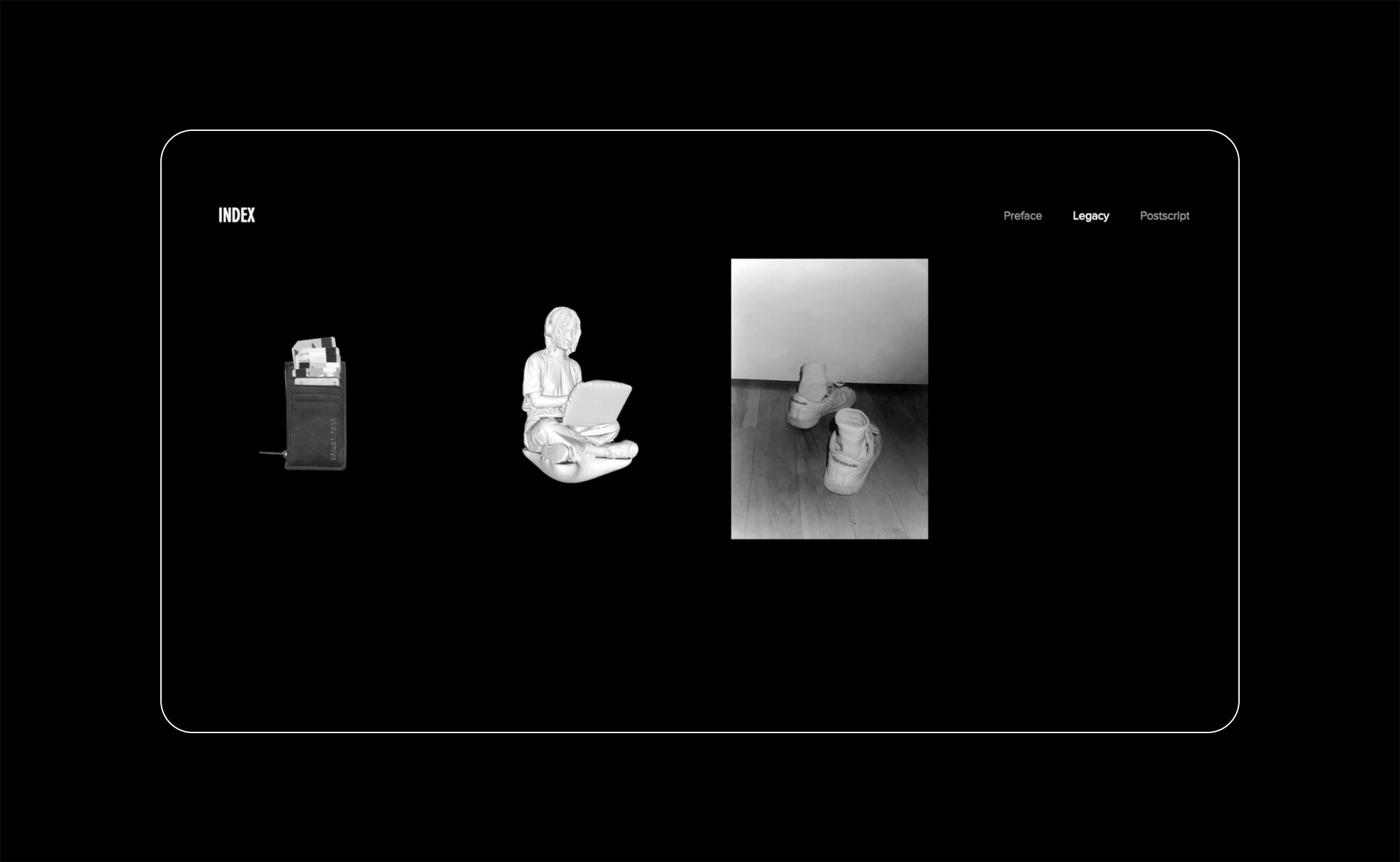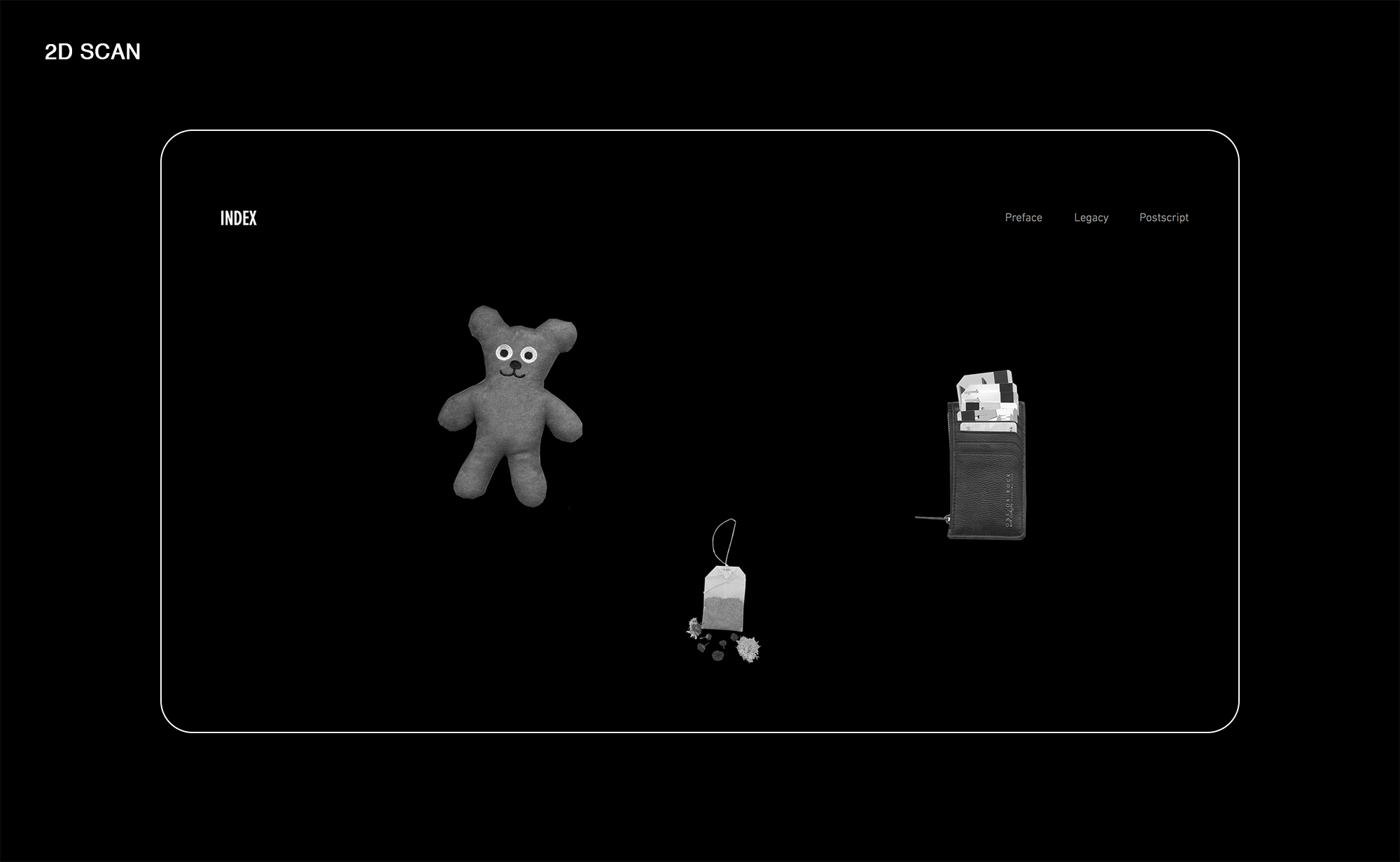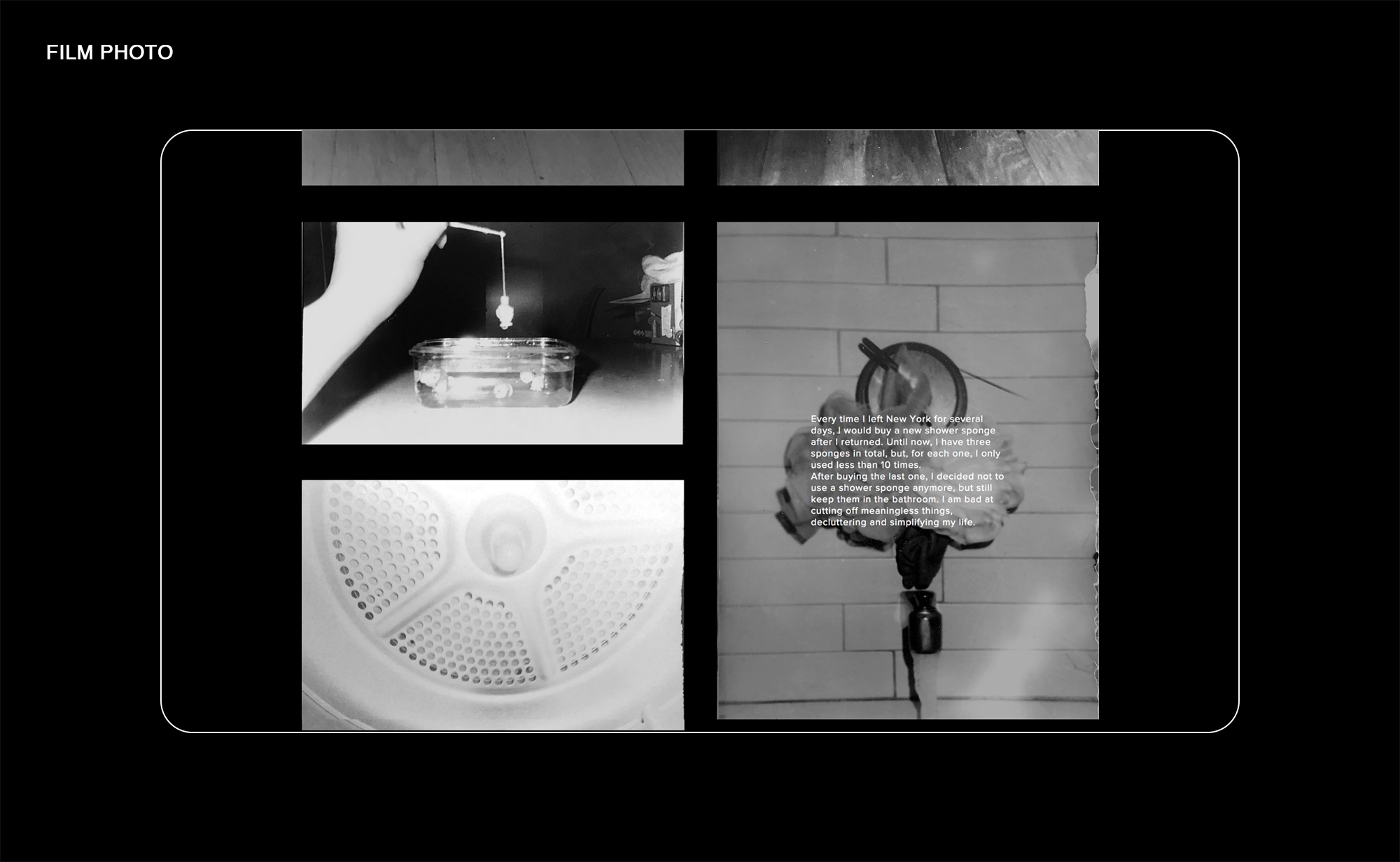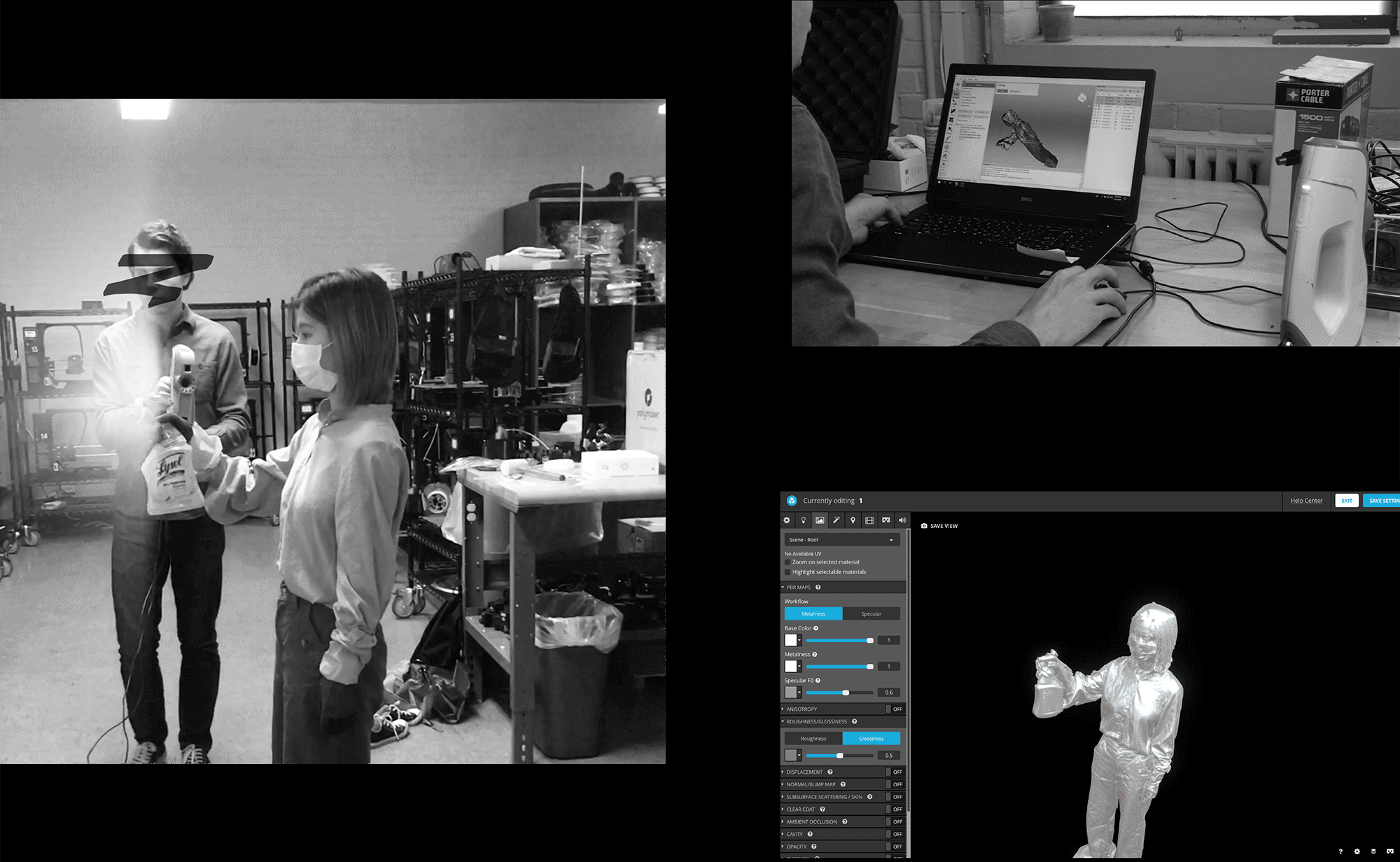Digital Legacy
Xiaoping Lian
Digital legacy is a product of contemporary technology development, which contains traces of life and the memories between the dead and their relatives. Thus, it is not only a proof that the dead ever exist, but also can be a medium that embodies some specific emotions for the relatives to memorialize the dead, by which it can become a comfort for the survivor. The thesis is based on current and developing technologies, experimenting with different ways to archive ourselves in a suitable way for family and friends to remember the legacy of the deceased.





Process of 2D SCAN
The intense light prevented me from opening my eyes, so it was hard to control the result, which means that it is not a suitable way to preserve part of my body. So I turned to scan my objects instead, which are parts of me.
Process of 3D SCAN
I went to the 3D Scan center several times, and every time I was with different outfits and in different poses. I should stand still in the whole process, otherwise, the result will be a ghosting image.